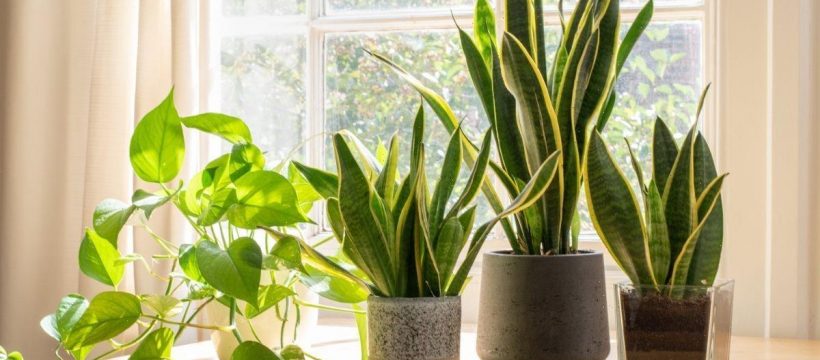
Finding ways to remove mould and keep your home dust-free can be tiresome jobs, especially when cleaning a whole house. However, keeping on top of it can help a number of health issues including asthma and irritated eyes. Rather than spending hours cleaning, why not incorporate a houseplant, which can help collect dust from the home on their leaves, as well as remove mould and toxins from the air.
Speaking exclusively to Express.co.uk, Suzie Woolley, head of product at Serenata Flowers, said: “All houseplants remove dust from the air due to the way they absorb minerals through their leaves.
“They produce negative ions that attract particles in the air like a little green vacuum cleaner. They absorb fine particles of dust (amongst other things) and break them down and use them to grow.
“The most effective plants will be those which continue to grow in the winter months.”
But it’s not just dust houseplants can remove, Chris Bonnett from GardeningExpress.co.uk, argued that households “will notice an improvement” if they use houseplants “to keep mould at bay”.

Wendy Rea, expert florist and business manager at Direct2Florist, has shared five of the “most effective” houseplants to remove mould and dust from homes.
1. Snake plants
Snake plants are really easy to take care of. It likes to be on the drier side so owners don’t need to water it every day. It can also take a wide range of light levels, so will thrive well in most rooms.
Wendy said: “Snake plants are a natural air purifier and are known to remove harmful chemicals from our homes. They remove dust as they absorb pollutants through their leaves.”
On top of that, they absorb humidity and moisture, helping you to keep the air fresh and keep mould at bay.
DON’T MISS
Remove ‘stubborn’ moss from paving in ‘15 minutes’ with one ingredient [EXPERT]
5 of the ‘biggest’ kitchen mistakes to ‘avoid’ – ‘reduces’ house value [INSIGHT]
‘First’ area of your peace lily to prune for the ‘strongest growth’ [TIPS]
2. English ivy
Another easy care choice for foliage is English ivy, but it’s also one of the best options for tackling mould and dust.
The florist said: “English ivy is one of the most effective air-purifying plants, known for its ability to absorb dust particles and mould, as well as other harmful airborne toxins, such as formaldehyde.
“It’s easy to maintain and will thrive in shade and indirect sunlight.” Ivy looks fantastic as a hanging plant but pet owners should beware as it’s toxic to cats and dogs.
3. Peace lilies
Not only are these houseplants beautiful as they offer stunning white flowers when in bloom, they can also help with mould and dust.

Wendy explained: “Peace lilies remove toxins from the air and prevent a buildup of mould and dust spores around the home.
“They prefer indirect sunlight which means that they can be placed in areas where there is a build-up of dust and they will continue to thrive.”
4. Spider plants
These are probably among the easiest plants to find and take care of. Even for those who have the tendency to kill plants, the spider plant is still the right choice.
It prefers lots of bright, indirect sunlight and it’s great for those who have pets because it’s not toxic and very resilient. Just make sure to water it a few times a week.

The expert said: “Spider plants are natural toxic-busting and allergy-reducing plants. They release oxygen into the air which reduces allergens, such as dust, in the air in our homes.
“You can place them in any desired space around the home and they will remain fresh and healthy during duller winter seasons.”
5. Aloe vera
According to Wendy, aloe vera improves air quality and helps to reduce a build-up of spores in the air, such as dust, by absorbing carbon dioxide and releasing oxygen into the air.
She said: “These plants absorb excess moisture and also cleanse the air of toxins, such as benzene and formaldehyde.”
Source: Read Full Article
